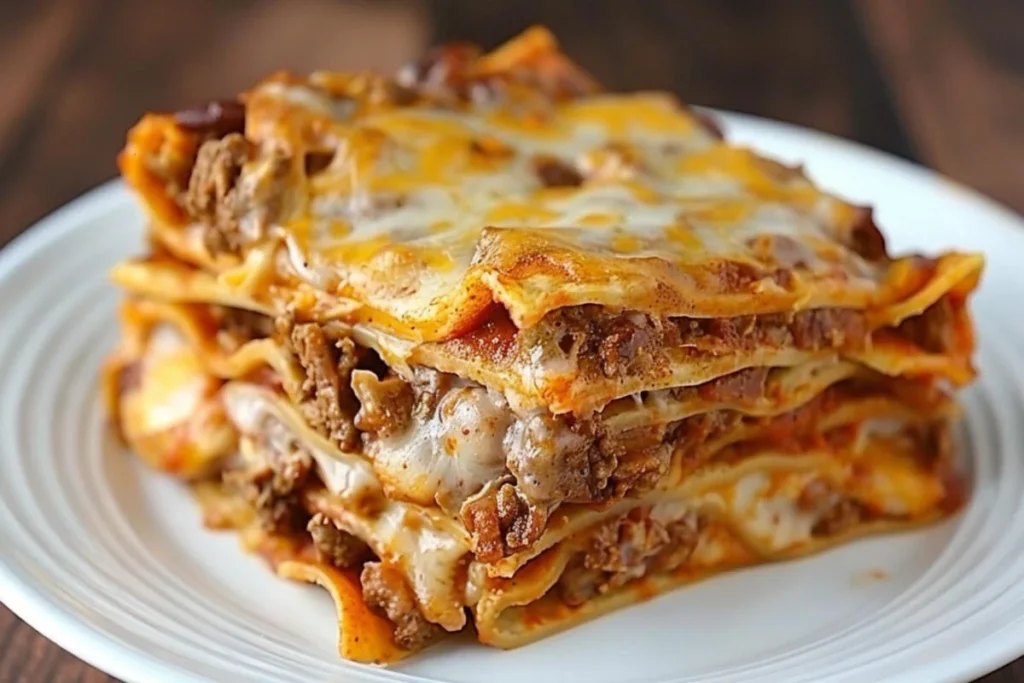
Introduction
What is Beef Lasagna?
Beef Lasagna is a hearty and flavorful dish that layers pasta, seasoned ground beef, rich tomato sauce, and a blend of creamy and melty cheeses. Baked to golden perfection, it is a classic comfort food enjoyed worldwide, offering a satisfying balance of textures and tastes in every bite.
The History of Lasagna: From Italy to the World
Lasagna’s roots trace back to ancient Italy, with early variations made using simple ingredients like dough, sauce, and cheese. Over time, it evolved into the layered pasta dish we know today, gaining popularity across Europe and eventually around the globe. Each region has added its twist, but the Italian-style Beef Lasagna remains a universally beloved staple.
Why Beef Lasagna is a Comfort Food Classic
The appeal of Beef Lasagna lies in its rich flavors and hearty nature. Combining tender pasta, savory beef, tangy sauce, and creamy cheese, it satisfies cravings and evokes a sense of warmth and nostalgia. Whether served at family dinners, gatherings, or as leftovers, it’s a dish that brings people together.
Key Components of Beef Lasagna
The Beef: Choosing the Right Ground Meat
For the best flavor, choose high-quality ground beef with a balance of fat and lean meat. An 80/20 blend is ideal, providing enough fat to keep the beef moist without making the dish overly greasy. For a lighter option, you can mix beef with ground turkey or chicken.
The Sauce: Traditional Marinara vs. Meat Sauce
- Traditional Marinara: Offers a simple, fresh tomato flavor that lets the beef and cheese shine.
- Meat Sauce: A richer option where the beef is cooked directly into the sauce, creating a heartier base for the dish. Enhance the sauce with garlic, onions, and Italian herbs like basil and oregano for a robust flavor profile.
The Cheese: Ricotta, Mozzarella, and Parmesan
- Ricotta Cheese: Adds creaminess and is often mixed with eggs and herbs for a smooth, flavorful layer.
- Mozzarella: Melts beautifully, creating that signature gooey texture.
- Parmesan: Provides a sharp, nutty flavor and is perfect for sprinkling on top for a golden, crispy crust.
Using a combination of these cheeses ensures a rich and balanced lasagna.
The Pasta: Fresh vs. Store-Bought Lasagna Sheets
- Fresh Pasta: Offers a tender, delicate texture and cooks quickly in the oven. Ideal for those seeking a homemade touch.
- Store-Bought Pasta: Convenient and reliable, with both no-boil and pre-cooked options available. Choose high-quality sheets to avoid sogginess or breaking during layering.
Tools and Equipment Needed
Essential Cookware: Baking Dish, Mixing Bowls, and Saucepan
- Baking Dish: A rectangular 9×13-inch dish is ideal for layering and baking lasagna evenly. Glass or ceramic dishes retain heat well, ensuring the lasagna stays warm for serving.
- Mixing Bowls: For combining cheeses, herbs, and other ingredients needed for the filling.
- Saucepan: Essential for cooking the meat sauce. Choose a large pan to allow room for simmering and mixing without spilling.
Tools for Prepping Ingredients
- Cutting Board and Knife: For chopping vegetables like onions and garlic for the sauce.
- Wooden Spoon or Spatula: To stir and break up the beef while cooking.
- Cheese Grater: For freshly grating mozzarella and Parmesan, enhancing the dish’s flavor and texture.
- Measuring Cups and Spoons: To ensure precise ingredient proportions for a consistent recipe.
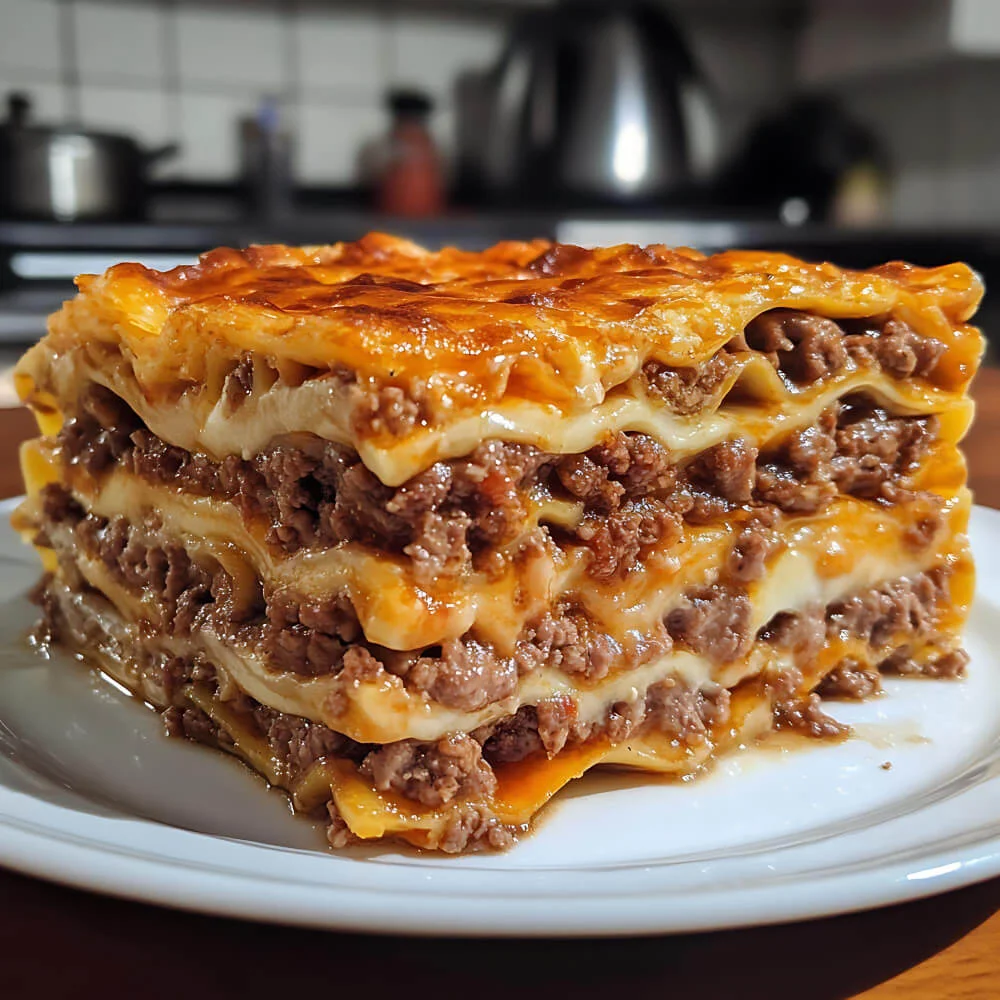
Tips for an Easy Cleanup After Cooking
- Use Non-Stick Spray or Parchment Paper: Prevents the lasagna from sticking to the baking dish, making cleanup easier.
- Pre-Organize Ingredients: Having everything ready reduces mess during preparation.
- Soak Tools Immediately: Soak the saucepan, spatula, and other utensils in warm, soapy water right after use to prevent food from hardening.
Step-by-Step Guide to Making Beef Lasagna
Preparing the Meat Sauce: Building Flavor
- Brown the Beef: Heat a saucepan over medium heat, add the ground beef, and cook until browned, breaking it into small crumbles.
- Add Aromatics: Stir in chopped onions, garlic, and a pinch of salt to enhance the flavor.
- Incorporate the Sauce: Pour in marinara or tomato sauce and simmer with Italian herbs, adjusting seasoning as needed. Let it simmer for 15-20 minutes to deepen the flavors.
Assembling the Layers: Sauce, Pasta, and Cheese
- Start with Sauce: Spread a thin layer of sauce on the bottom of the baking dish to prevent sticking.
- Add Pasta: Lay lasagna sheets over the sauce, overlapping slightly.
- Layer Cheese: Spread a mixture of ricotta, mozzarella, and Parmesan over the pasta.
- Repeat: Alternate layers of sauce, pasta, and cheese until the dish is filled, finishing with a generous topping of mozzarella and Parmesan.
Baking the Lasagna: Achieving the Perfect Texture
- Cover and Bake: Cover the dish with aluminum foil and bake in a preheated oven at 375°F (190°C) for 25-30 minutes.
- Uncover for Browning: Remove the foil and bake for an additional 10-15 minutes to achieve a golden, bubbly top layer.
Letting the Lasagna Rest Before Serving
Allow the lasagna to rest for 10-15 minutes after removing it from the oven. This step helps the layers set, making it easier to slice and serve while preserving its structure.
Variations of Beef Lasagna
Classic Italian-Style Lasagna
The traditional Italian-style Beef Lasagna features layers of tender pasta, seasoned ground beef, rich tomato sauce, and a blend of ricotta, mozzarella, and Parmesan cheeses. This timeless recipe sticks to the basics, delivering comfort and flavor in every bite.
Spicy Lasagna with Chili Flakes or Jalapeños
For those who love heat, adding chili flakes to the sauce or layering in finely chopped jalapeños creates a spicy twist on the classic dish. This variation balances the savory and cheesy flavors with a subtle kick, making it ideal for spice enthusiasts.
Gluten-Free Beef Lasagna with Alternative Pasta
Gluten-free lasagna is an excellent option for those with dietary restrictions. Use pasta made from rice, lentils, or chickpeas as a substitute for traditional sheets. Pair these with a rich meat sauce and cheese to maintain the dish’s hearty, comforting appeal.
Vegetarian and Vegan Lasagna with Beef Substitutes
For a meat-free version, replace the ground beef with plant-based substitutes like lentils, mushrooms, or soy-based crumbles. Vegan cheese options, such as cashew ricotta or almond mozzarella, make it possible to enjoy a dairy-free yet creamy and satisfying lasagna.
Pairing Beef Lasagna with Sides
Garlic Bread: Homemade or Store-Bought
Garlic bread is a classic accompaniment to Beef Lasagna, providing a buttery, garlicky crunch that complements the dish’s rich flavors. Whether made fresh with a baguette or purchased pre-made, it’s a must-have for any lasagna meal.
Fresh Salads: Caesar, Caprese, or Arugula
- Caesar Salad: Crisp romaine lettuce, creamy dressing, and croutons offer a refreshing counterpoint to the lasagna’s richness.
- Caprese Salad: Fresh tomatoes, mozzarella, basil, and a drizzle of balsamic glaze bring light, vibrant flavors to the table.
- Arugula Salad: Tossed with lemon vinaigrette, this peppery green salad cuts through the heaviness of the lasagna, adding a zesty contrast.
Wine Pairings: Red and White Varieties That Complement the Dish
- Red Wines: Full-bodied options like Cabernet Sauvignon or Chianti enhance the savory flavors of the beef and tomato sauce.
- White Wines: Creamy, oaked Chardonnays or light Pinot Grigio pair well with the cheese layers, balancing the dish’s richness.
These wine pairings elevate the meal, creating a harmonious dining experience that’s perfect for any occasion.
Tips for Perfecting Beef Lasagna
Achieving the Perfect Sauce-to-Pasta Ratio
- Balance is Key: Ensure each layer has enough sauce to coat the pasta but not so much that it becomes soupy. A thin, even spread of sauce is ideal.
- Don’t Overload Layers: Avoid piling too much meat or cheese in one layer, as this can affect cooking and slicing.
- Reserve Extra Sauce: Keep some sauce aside to add moisture if the lasagna looks dry after baking.
Avoiding Common Mistakes When Assembling the Layers
- Cook Pasta Properly: If using traditional lasagna sheets, cook them al dente to avoid over-softening during baking.
- Dry Ingredients: Pat cheese and vegetables dry before layering to prevent excess moisture.
- Layer Evenly: Spread ingredients uniformly to ensure consistent texture and flavor throughout the dish.
How to Get a Golden, Cheesy Crust Without Burning
- Use Foil Initially: Cover the lasagna with aluminum foil for the first part of baking to retain moisture and allow even cooking.
- Uncover for Browning: Remove the foil during the last 10-15 minutes to achieve a golden, bubbly crust.
- Monitor Closely: If the cheese browns too quickly, tent the foil back over the dish to prevent burning while finishing baking.
Beef Lasagna for Special Occasions
Lasagna as a Holiday Centerpiece
Beef Lasagna is a versatile and crowd-pleasing main dish, making it a great choice for holiday meals. Its rich, layered flavors pair well with seasonal sides and create a warm, comforting centerpiece for gatherings.
Preparing Lasagna for Large Gatherings or Potlucks
- Double the Recipe: For bigger groups, prepare multiple lasagnas in separate pans to ensure even cooking and easy serving.
- Make Ahead: Assemble the lasagna a day in advance and refrigerate. This not only saves time but also enhances the flavors as they meld together.
- Transport Safely: Use an insulated carrier to keep the lasagna warm for potlucks or events.
Mini Lasagna Portions for Individual Servings
Mini lasagnas, made in muffin tins or small ramekins, are perfect for serving at parties or formal dinners. These individual portions are easy to assemble, cook faster, and allow guests to enjoy their own neatly layered serving of lasagna.
Storing and Reheating Beef Lasagna
Proper Storage Techniques for Leftovers
- Refrigerate Promptly: Allow the lasagna to cool to room temperature, then cover it tightly with foil or plastic wrap and refrigerate within two hours of cooking.
- Use Airtight Containers: Transfer individual portions to airtight containers to maintain freshness. Properly stored lasagna can last 3-4 days in the refrigerator.
- Label for Convenience: If freezing, label containers with the date to keep track of storage times. Frozen lasagna can last up to 3 months.
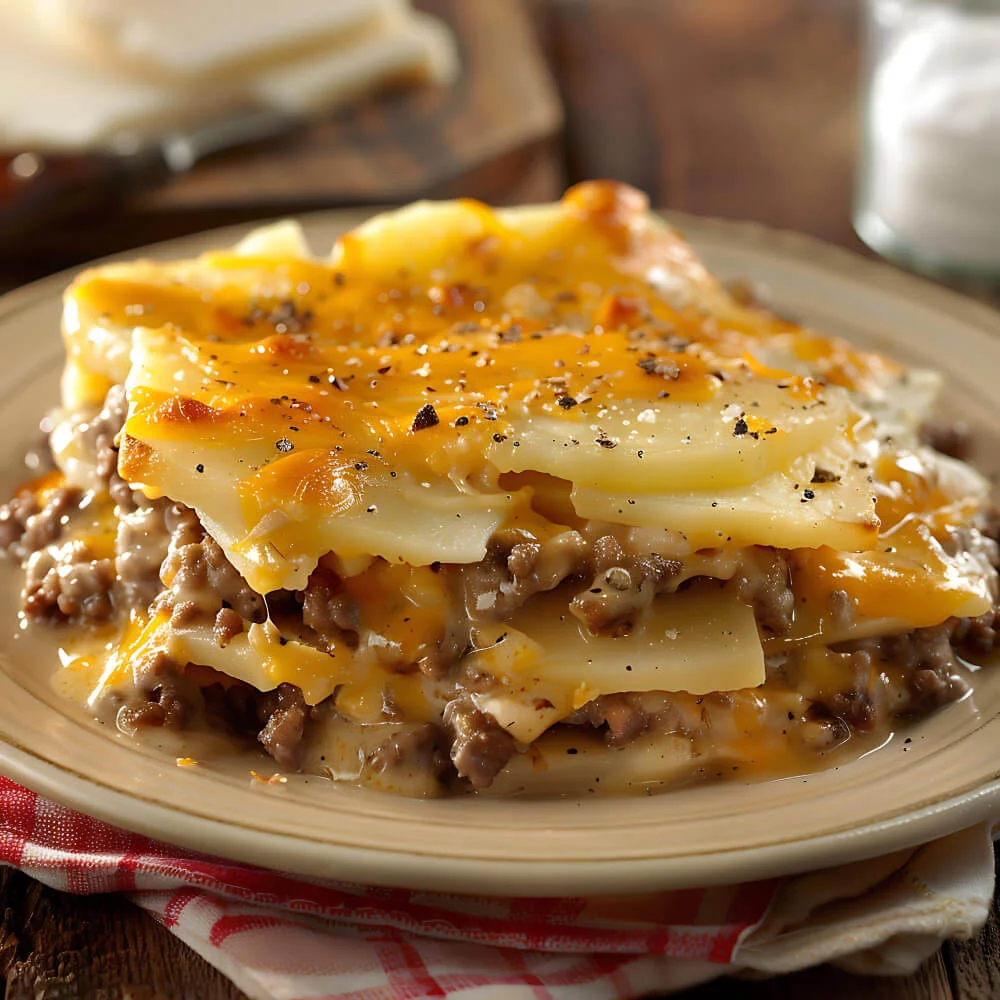
Best Ways to Reheat Without Drying Out
- Oven Method: Cover the lasagna with foil and reheat at 350°F (175°C) for 20-30 minutes, adding a splash of water or sauce to prevent it from drying out.
- Microwave Option: Place a portion on a microwave-safe plate, cover with a damp paper towel, and heat in 1-minute intervals, checking for even heating.
- Skillet Reheat: For smaller portions, heat in a covered skillet over low heat with a small amount of water or sauce for steam.
How to Freeze and Defrost Lasagna for Meal Prep
- Freezing Fully Cooked Lasagna: Cool the lasagna completely, wrap it tightly in plastic wrap and foil, or store it in a freezer-safe container.
- Freezing Uncooked Lasagna: Assemble the lasagna, then freeze it before baking. Wrap tightly to prevent freezer burn.
- Defrosting: Move the lasagna to the refrigerator overnight to thaw gradually. Bake or reheat as usual, adding extra time if baking from frozen.
Healthier Alternatives and Modifications
Using Lean Ground Beef or Turkey for Lower Fat Content
Substituting regular ground beef with lean ground beef or turkey reduces fat and calorie content while maintaining the hearty flavor of the dish. Ensure the meat is well-seasoned to enhance its taste.
Reducing Cheese for a Lighter Lasagna
- Adjust Portions: Use smaller amounts of mozzarella and ricotta while keeping a sprinkle of Parmesan for flavor.
- Low-Fat Alternatives: Opt for low-fat or part-skim versions of the cheeses to reduce calorie and fat intake without compromising creaminess.
Low-Carb and Keto-Friendly Lasagna Variations
- Zucchini or Eggplant Slices: Replace lasagna noodles with thinly sliced zucchini or eggplant for a low-carb alternative.
- Cauliflower Layers: Use cauliflower sheets or puree to mimic the texture of traditional pasta layers.
- Cheese-Based Crusts: For keto-friendly options, create a crust from melted cheese or almond flour to layer the lasagna.
FAQs About Beef Lasagna
What type of beef is best for lasagna?
Ground beef with an 80/20 fat-to-lean ratio is ideal for lasagna. This provides enough fat for flavor and moisture without making the dish too greasy. For a leaner option, you can mix ground beef with ground turkey or chicken.
What is the difference between lasagna and lasagne?
The terms “lasagna” and “lasagne” often confuse people but are simply regional variations.
- Lasagna: Used in American English to refer to the dish itself.
- Lasagne: The plural Italian term for the pasta sheets used in the dish.
What are the correct layers for lasagna?
A classic lasagna follows this layering sequence:
- A thin layer of sauce at the bottom.
- Lasagna sheets.
- A layer of ricotta or other cheese mixture.
- Meat sauce or marinara.
- Repeat layers, ending with a top layer of pasta, sauce, and cheese.
What type of meat goes with lasagna?
While beef is the traditional choice, other meats like ground pork, Italian sausage, or a mix of beef and veal can enhance the flavor. For a unique twist, try shredded chicken or plant-based meat substitutes.
How Many Layers Should a Lasagna Have?
A standard lasagna typically has 3-4 layers, but the number can vary depending on the depth of your baking dish. More layers add complexity to the flavors and textures, while fewer layers simplify the dish.
Can You Make Lasagna Ahead of Time?
Yes, lasagna is an excellent make-ahead dish. Assemble the layers, cover, and refrigerate for up to 24 hours before baking. This also allows the flavors to meld, resulting in a richer taste.
What’s the Best Way to Prevent Soggy Lasagna?
- Drain Ingredients: Ensure ricotta cheese and cooked beef are drained of excess moisture.
- Avoid Overloading Sauce: Use just enough sauce to coat the layers without making them too wet.
- Let It Rest: Allow lasagna to rest after baking to absorb any remaining moisture and set the layers.
Can You Use No-Boil Lasagna Sheets?
Yes, no-boil lasagna sheets are a convenient alternative to traditional pasta. These sheets cook during baking by absorbing moisture from the sauce, so ensure your sauce has enough liquid for proper cooking.
How Long Should You Let Lasagna Rest After Baking?
Let lasagna rest for at least 10-15 minutes after removing it from the oven. This helps the layers set, making it easier to slice and serve without falling apart.
What Are Some Creative Additions to Beef Lasagna?
- Vegetables: Add spinach, zucchini, or mushrooms for extra flavor and nutrition.
- Herbs and Spices: Enhance the sauce with fresh basil, thyme, or a pinch of red pepper flakes.
- Cheese Varieties: Experiment with cheeses like Gouda, Fontina, or goat cheese for a unique twist.
Conclusion
Why Beef Lasagna is a Timeless Dish
Beef Lasagna has earned its place as a culinary classic for good reason. Its hearty layers of savory meat, rich tomato sauce, tender pasta, and creamy cheese create a comforting, satisfying meal that transcends generations and cultures. Whether served for casual family dinners, festive holidays, or gatherings with friends, lasagna is a dish that brings people together, offering warmth and indulgence in every bite. Its versatility and ability to adapt to various tastes and preferences ensure it remains a staple on tables worldwide.
Encouragement to Experiment and Make It Your Own
One of the joys of Beef Lasagna is its endless adaptability. Don’t hesitate to put your personal spin on this classic dish—try new cheeses, add vegetables, experiment with spices, or explore healthier alternatives. Whether you stick to a traditional recipe or create your own fusion masterpiece, lasagna is a canvas for culinary creativity.
Beef Lasagna is a quintessential comfort food, combining layers of tender pasta, rich meat sauce, and creamy cheese for a hearty and satisfying meal. Perfect for gatherings or a cozy dinner at home, this classic dish offers a world of flavor in every bite. Whether you’re exploring lasagna’s traditional roots or putting your own spin on it, the dish’s versatility is a delight for all. For more inspiration, check out recipes like the Ultimate Guide to Philly Cheesesteak or elevate your cooking skills with the Ultimate Guide to Beef Wellington. Visit OrgRecipes for more culinary ideas!
Viral Tuna Salad: 5 Bold Reasons Matthew McConaughey’s Recipe Wins
Healthy Homemade Chicken Mortadella
Chicken Mortadella changed my deli game forever. I used to stare at processed meat…
The BEST Taco Pasta
When I’m short on time and need to get a satisfying dinner on…
Classic German Kartoffelpuffer Recipe (Authentic, Crispy & Easy to Make)
Easy Butter Pecan Cookies Recipe
There’s something undeniably comforting about the scent of buttery, nutty cookies wafting from…
Perfect Strawberry Cheesecake Recipe
If there’s one dessert that’s guaranteed to silence a lively room, it’s this…


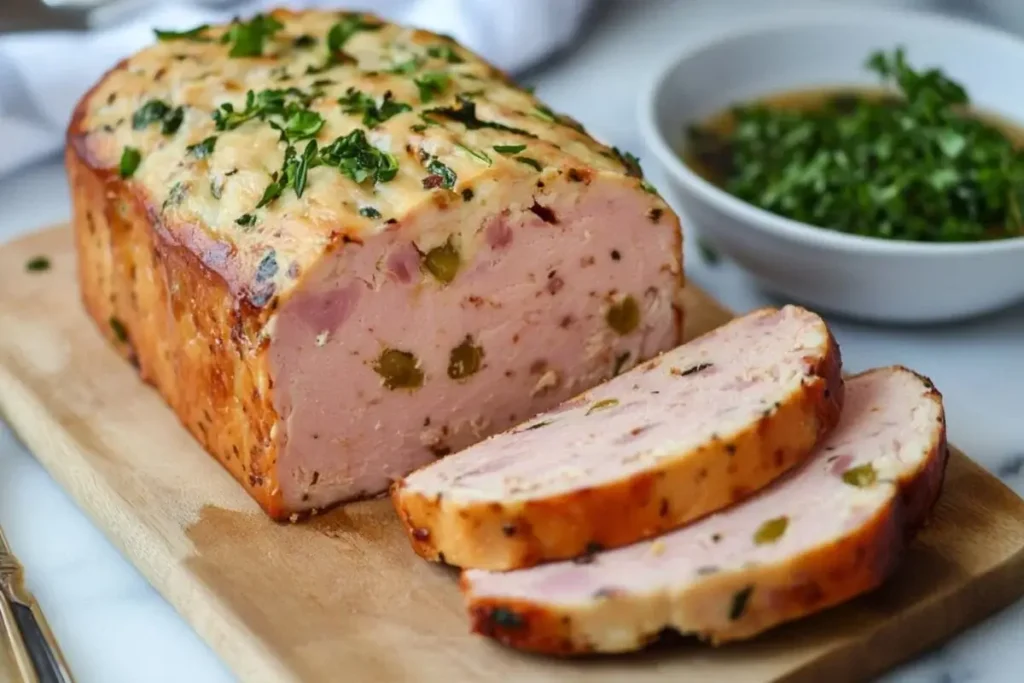

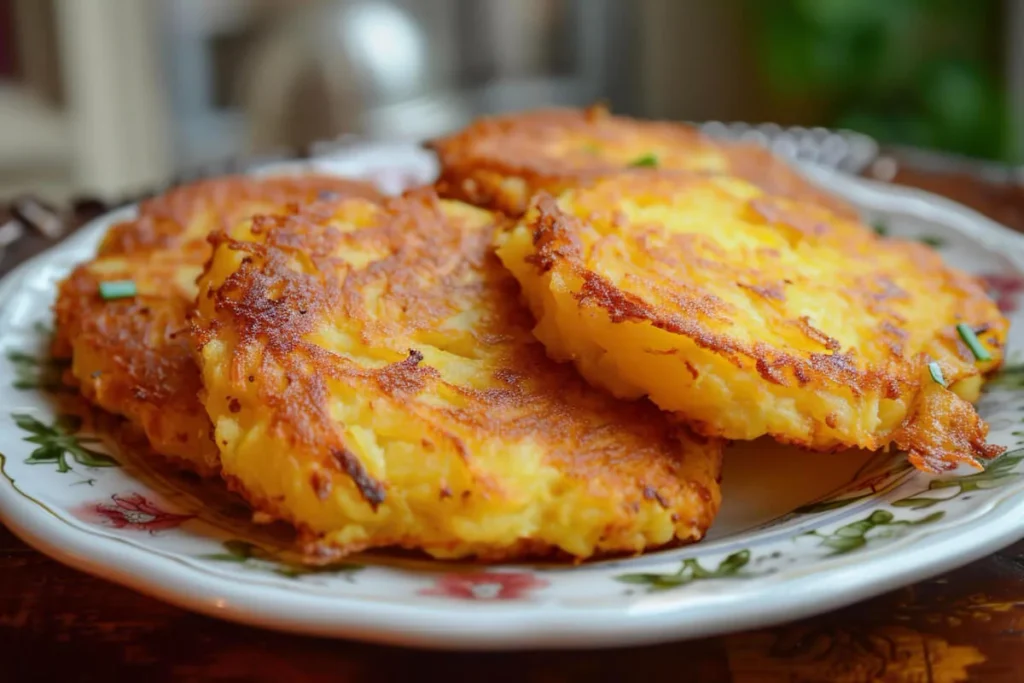


2 thoughts on “Beef Lasagna”